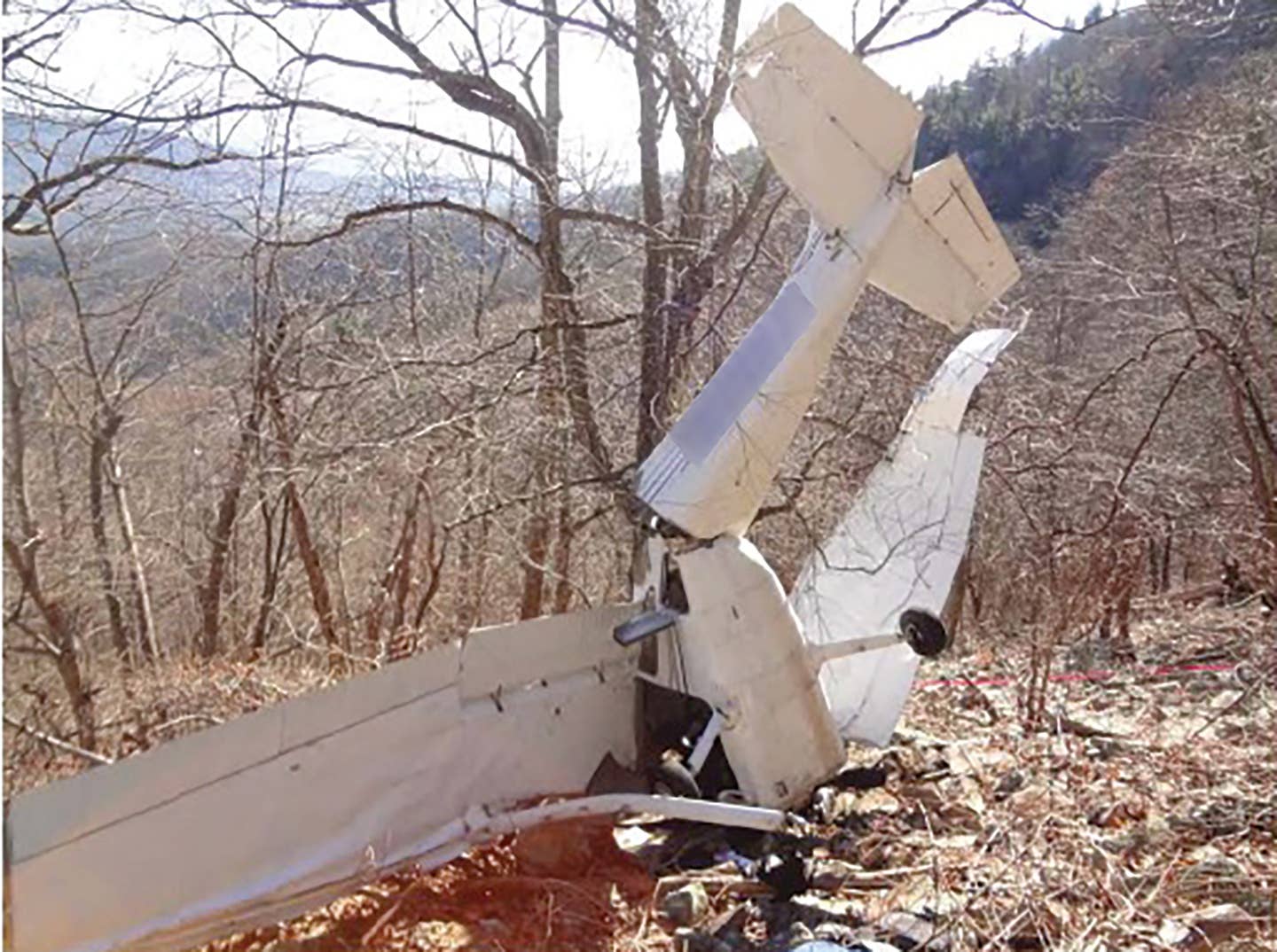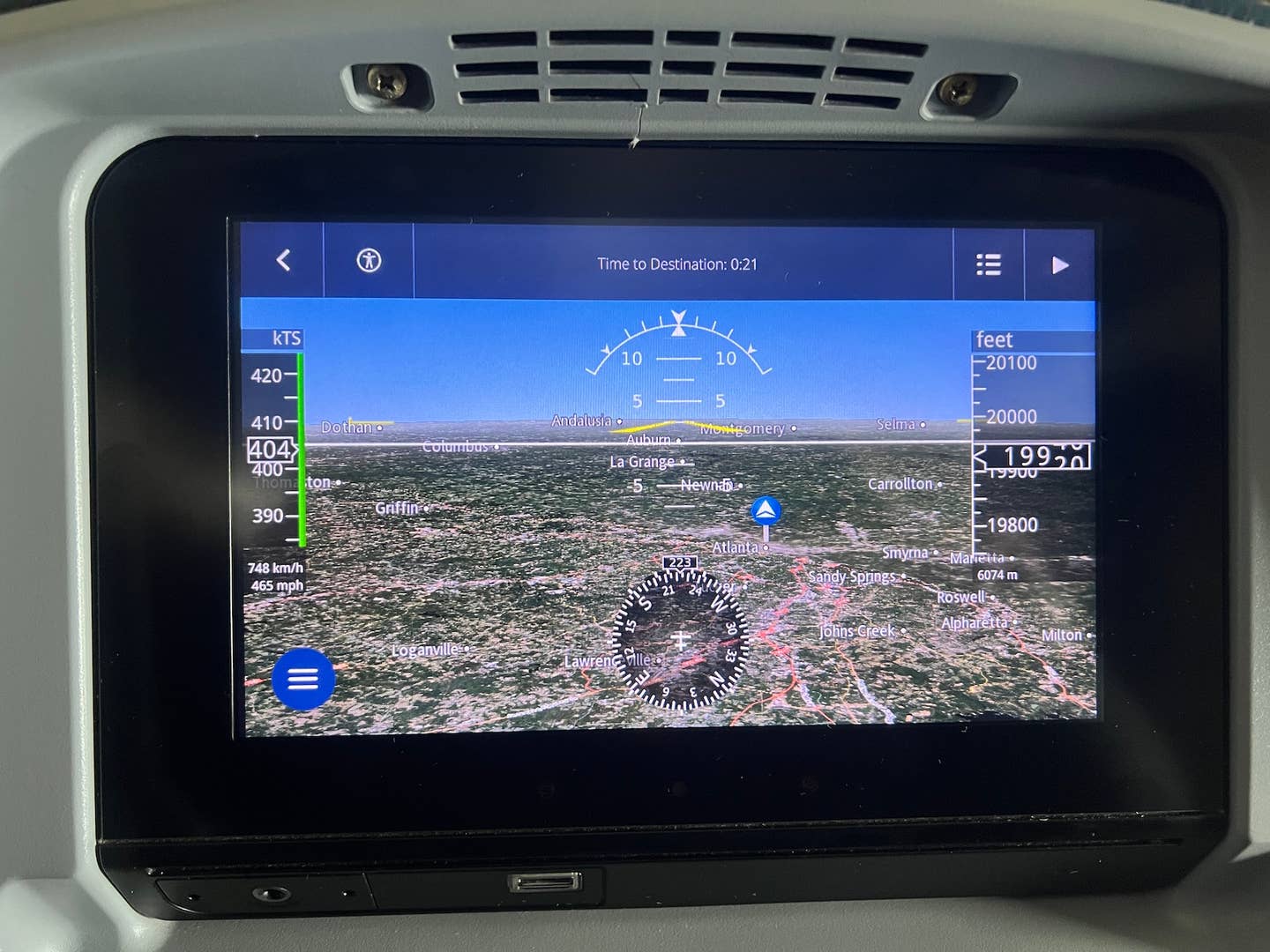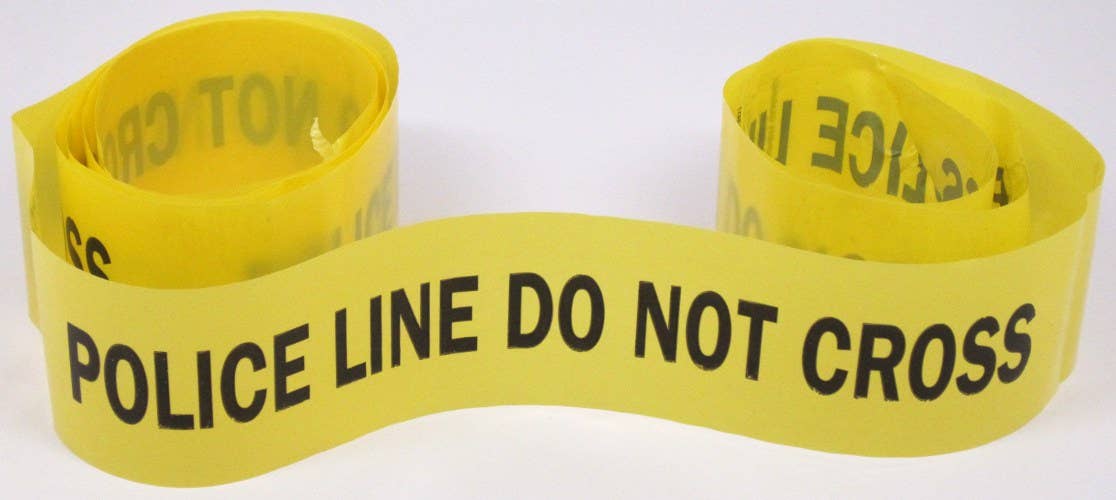Most Of Us Know How To Stay Alive In An Airplane: Until We Don’t
The accident rate and body count is basically in stasis, ticking up and down. For me personally, 2021 was the worst year ever for losing friends and colleagues.

The Cessna 172 in the accident above was equipped with a 121.5 MHz beacon. It activated on impact, but didn’t aid in locating the airplane. One occupant was killed, one survived after a night in the woods.
When I was learning to fly more years ago than I care to reveal, the accident rate was 18.1/100,000, more than three times what it is now. Just 10 years before that, in 1960, the rate was a whopping 36.5. Crashes occurred at the rate of more than a dozen a day. Lots of causes, of course, but drunken flying was common then, as was driving while stewed. It was a different era then and we should all be glad it’s gone.
The current overall accident rate, at about 4.9, has ticked up a little recently, but in the context of the big gains of even 20 years ago, it’s just noise in the data. A handful more or fewer accidents can swing the rate up or down with no indication of a persistent trend. Occurrences in 2021 make me wonder if we’ve reached rock bottom on accident reduction without new thinking. Four people I know, worked with or flew with died in aircraft accidents. All of them appear to be some form of loss of control, two on takeoff and two on approach. Two may have had mechanical issues. All of them were experienced pilots.
On July 4, Brad Marzari was killed in the crash of a Focke-Wulf FWP-149D trainer he excitedly told he had just bought when I interviewed him for this video at Sun ‘n Fun in April. He and I crossed paths many times at various shows. He was a blogger and podcaster nicknamed Launchpad. The engine, the oddball Lycoming GO-480, quit and Marzari evidently couldn’t find a safe place to land it near Killeen, Texas.
Three weeks later, famed Naval aviator Dale “Snort” Snodgrass was killed in the crash of his SIAI-MARCHETTI SM-1019B in Lewiston, Idaho. The accident was caught on security cam video that made for gruesome watching. The fact pattern strongly suggests a mechanical issue related to the trim or elevator control systems. It was likely not a control lock left in place, since the airplane is impossible to taxi with the lock installed. I knew Snodgrass through his work at airshows and we shot this video with him at Sun ‘n Fun in 2010.
During that interview, we had a long talk about his experience flying the F-14 off carriers. He was a leading expert on that type and probably had more carrier traps that any other Tomcat pilot. That included a harrowing incident in the Norwegian Sea back when the Navy was pursuing its controversial Northern Strategy during the 1980s and carriers were operating in extreme conditions. He told me on one sortie, he flew a dozen approaches to a heaving deck before getting aboard. Snodgrass didn’t survive the high-risk world of carrier ops by being sloppy. What I remember most about him was how engaging he was at explaining aircraft and maneuvering to an aviation audience. You’ll see that in the video.
On December 10, friend Catherine Kloess died in the crash of her skydiving aircraft in Statesboro, Georgia, just after takeoff. I knew her through her years running the packing mat at Zephyrhills where she packed more of my parachutes than I can count. She was a commercial pilot with more than 4000 hours, much of that time flying skydivers. (None were on the crash aircraft; it was a night flight.) The NTSB’s photo of the wreckage path doesn’t suggest a stall/spin, but some other kind of control loss.
Not even a week later, MyGoFlight found Charlie Schneider was killed in Knoxville, Tennessee, but he lived long enough to tell first responders he had encountered wake turbulence from a landing Airbus A320. I flew with Charlie to evaluate his light aircraft HUD in an SR22 for this video. We disagreed on the value of HUDs for light aircraft, but I was impressed with his passion to develop a good one. After the flight, we sat in the airplane for 45 minutes during which Charlie explained that he couldn’t understand why I wasn’t more enthusiastic about the Cirrus after producing this video on the efficacy of the CAPS parachute. The gist of the conversation was that it wasn’t my job to be a gladhander, but to present the facts and let the conclusion follow it. I’m re-publishing the video because I think it did exactly that.
So personally, 2021 was a lousy year of loss for me, but more so for the families of the people who died in those crashes. The worst that I can remember in five decades of flying. But consider where we are at the start of a new year. We have a gaggle of YouTube channels providing all but real-time analysis of accidents; we have several websites that also post reliable accident information almost as soon as it’s available; the AOPA Air Safety Institute has stepped up its timely analysis of accident data and even the NTSB is improving the quality and speed of its preliminary reports. The Kloess accident, for example, already has a fairly detailed summary and so does the Marzari crash. Although we inundate audiences with all this information, we don’t seem to be stopping people from crashing for the same reasons we’ve always crashed. In other words, despite an eye-glazing torrent of information, we’re not fixing much, unless you think we would have more accidents if we stopped doing all this.
All of the accident reporting seems episodic and focused on just that one thing that causes the crash. So read it and add to the stuff you have to remember. After you’ve seen or read enough of this stuff, it starts to induce executive overload. I’m beginning to think that what’s needed is a broader way of thinking about and analyzing risk to focus on things that will kill me today, for this particular flight. The NTSB report reveals that a mechanic had found non-ferrous metal in the filter screen of Brad Marzari’s engine and advised him not to fly it until it was sorted out. For whatever reason, he rejected that advice and flew anyway. In my view, the broader analysis should have recognized not just the immediate hazard, but the potential faulty thought process of dismissing it. In other words, can I explain to myself why I’m not being stupid here?
From flying with Charlie Schneider, I could assume he knew about the hazards of wake turbulence. I wouldn’t even have thought to ask. But I don’t know this. I think pilots know things that they don’t all the time. Sometimes I think I know things that I don’t. And I’ve read more accident reports than is probably healthy. The more I write about these things, the more I think about this, the more I think the way to survive is to drop the focus on apps and glass panels and develop and maintain a heightened awareness of what can kill you.
And that’s basically everything. If it doesn’t, you hit the right combination of skill and luck. I know four people who didn’t.






